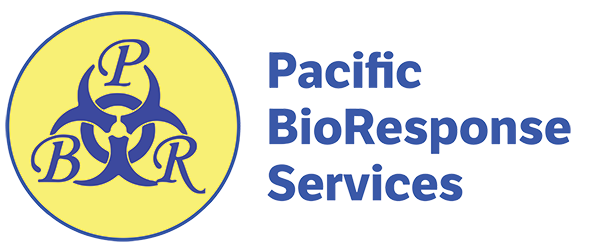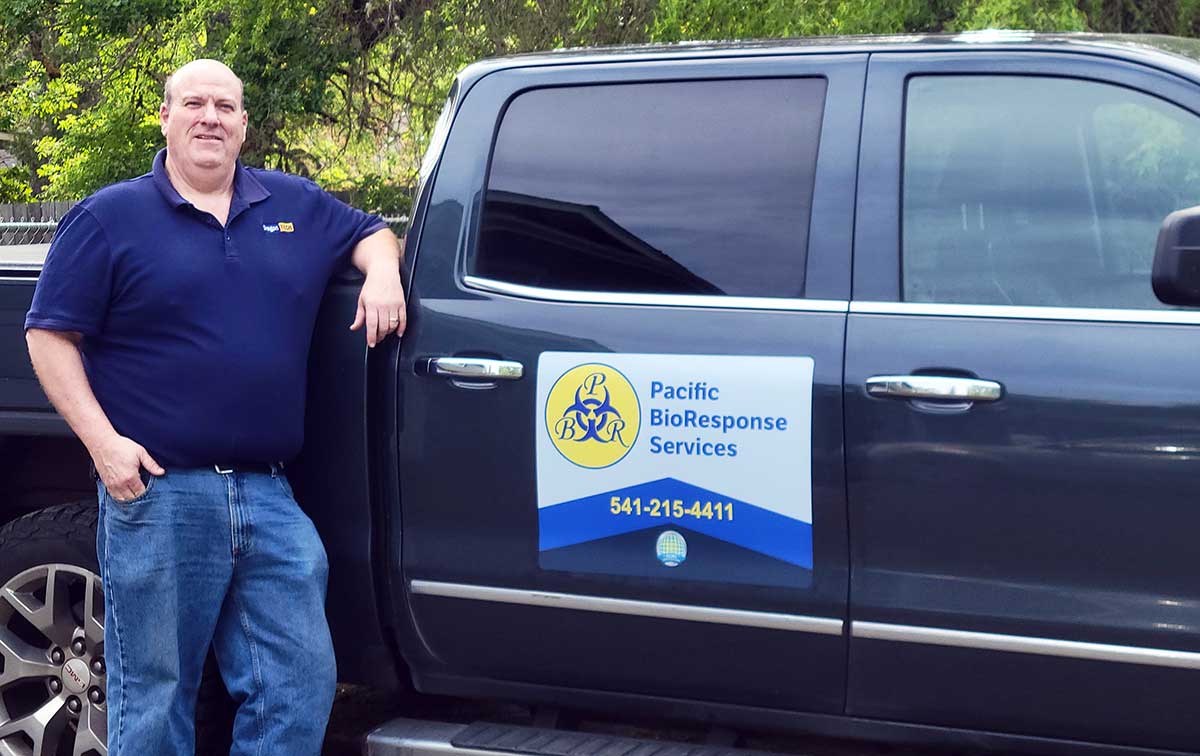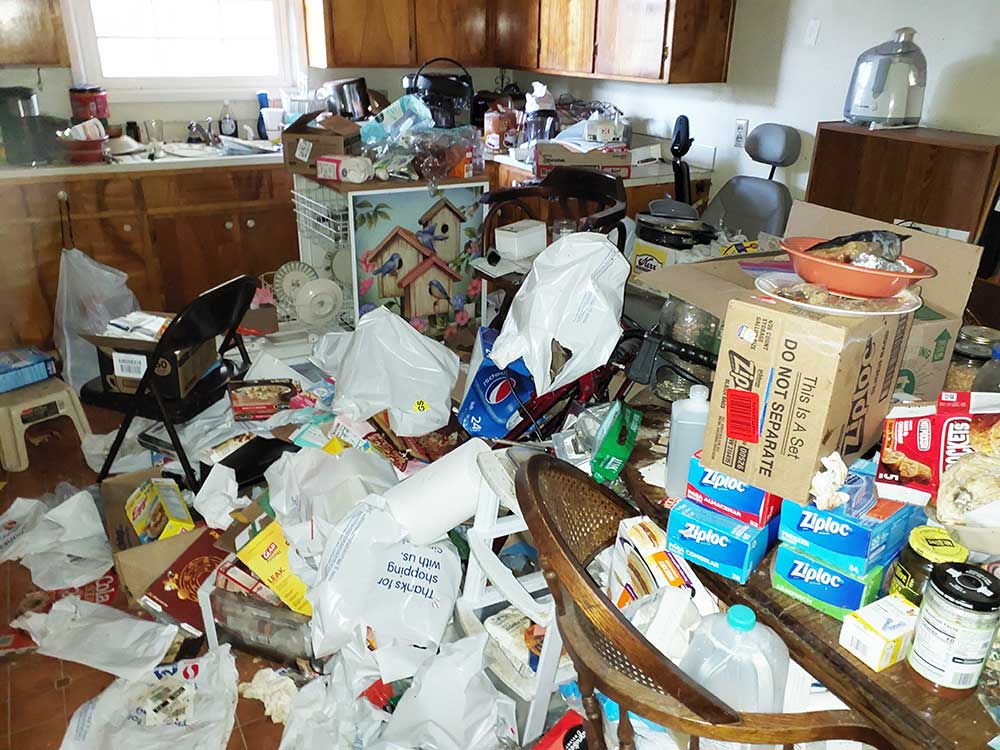Biohazards pose a serious concern in various environments, including homes, workplaces, and public spaces. Understanding what constitutes a biohazard is the first step in ensuring safety and proper handling. At Pacific BioResponse, we specialize in safely managing and remediating biohazardous situations. In this blog, we’ll break down what constitutes a biohazard, why these materials are hazardous, and how professional response teams like ours can assist.
Defining a Biohazard
A biohazard, short for biological hazard, refers to any biological substance that poses a threat to human health or the environment. These materials can include microorganisms, toxins, or other biological agents that may cause illness, injury, or environmental damage. Biohazards are typically infectious or toxic and require specialized handling to prevent harm.
The Occupational Safety and Health Administration (OSHA) and the Centers for Disease Control and Prevention (CDC) categorize biohazards based on their risk level, ranging from Biosafety Level 1 (low risk) to Biosafety Level 4 (high risk, such as Ebola). However, in everyday scenarios, biohazards are often identified by their potential to cause harm rather than their specific biosafety classification.
Common Examples of Biohazards
Biohazards can be found in various settings, and recognizing them is critical for safety. Here are some of the most common types of biohazards:
- Blood and Bodily Fluids
Blood, saliva, cerebrospinal fluid, and other bodily fluids can carry pathogens like hepatitis B, hepatitis C, or HIV. Spills from accidents, medical procedures, or crime scenes often require professional cleanup to eliminate health risks. - Medical Waste
Used needles, bandages, swabs, and other medical supplies can be contaminated with infectious agents. Improper disposal of medical waste can lead to the spread of infections, making it a significant biohazard. - Microbiological Waste
Cultures, specimens, or laboratory materials containing bacteria, viruses, or fungi fall under this category. These are common in research facilities, hospitals, and clinics. - Animal Waste and Carcasses
Waste from animals, including feces or carcasses, can harbor diseases transmissible to humans, such as rabies or zoonotic infections. This is particularly relevant in agricultural or veterinary settings. In particular, rodent feces can carry pathogens such as hantavirus, which can cause serious illness or even death. - Mold and Fungi
Certain molds, like black mold (Stachybotrys), can produce toxins that cause respiratory issues or allergic reactions. Mold growth in water-damaged buildings is a common biohazard. - Sewage and Wastewater
Sewage backups or overflows contain harmful bacteria, viruses, and parasites, such as E. coli or Giardia, posing significant health risks if not properly remediated. - Toxic Biological Substances
Some biohazards, like ricin or botulinum toxin, are naturally occurring toxins produced by organisms. These are rare but extremely dangerous.
Why Are Biohazards Dangerous?
Biohazards pose risks because they can cause infections, allergic reactions, or toxic effects. Exposure can occur through direct contact, inhalation, ingestion, or puncture wounds (e.g., from contaminated needles). The dangers are amplified in situations where biohazards are not immediately visible, such as microscopic pathogens or residues left after improper cleaning.
Improper handling of biohazards can also lead to environmental contamination, affecting water sources, soil, or air quality. This is why professional biohazard response teams, equipped with specialized training and equipment, are essential for safe remediation.
Recognizing Biohazard Symbols
Biohazards are often marked with a universal biohazard symbol—a distinctive design with three curved lines forming a circle. This symbol alerts people to the presence of hazardous biological materials, such as in medical waste containers, laboratories, or contaminated areas. If you see this symbol, avoid contact and seek professional assistance.
When to Call a Professional
Attempting to clean up a biohazard without proper training or equipment can be dangerous. Situations that require professional intervention include:
- Crime or trauma scenes with blood or bodily fluids
- Sewage backups or flooding
- Hoarding situations with biological contamination
- Mold infestations
- Unattended deaths or decomposition
- Medical waste spills or improper disposal
At Pacific Biohazard Response, our certified technicians follow strict OSHA and EPA guidelines to safely decontaminate and restore affected areas. We use advanced personal protective equipment (PPE), specialized cleaning agents, and proper disposal methods to ensure your safety and peace of mind.
Preventing Biohazard Risks
While professional cleanup is necessary for significant biohazard incidents, prevention can reduce risks. Here are a few tips:
- Proper Waste Disposal: Ensure medical waste, sharps, and other hazardous materials are disposed of in designated containers.
- Regular Cleaning: Maintain clean environments to prevent mold growth or the accumulation of biological contaminants.
- Prompt Reporting: Report spills, leaks, or potential biohazards immediately to avoid escalation.
- Training: Educate employees or household members about biohazard risks and safety protocols.
Trust Pacific BioResponse Services for Expert Remediation
Biohazards are more common than you might think, but they don’t have to be a lasting threat. By understanding what classifies as a biohazard and recognizing when professional help is needed, you can protect your health and the environment. At Pacific BioResponse Services, we’re committed to providing fast, discreet, and thorough biohazard cleanup services to keep our communities safe.
If you’re facing a biohazard situation or have questions about our services, contact our team today. We’re here to help 24/7, ensuring your space is safe and restored.
Disclaimer: This blog is for informational purposes only. Always consult professionals for biohazard cleanup and follow local regulations.








